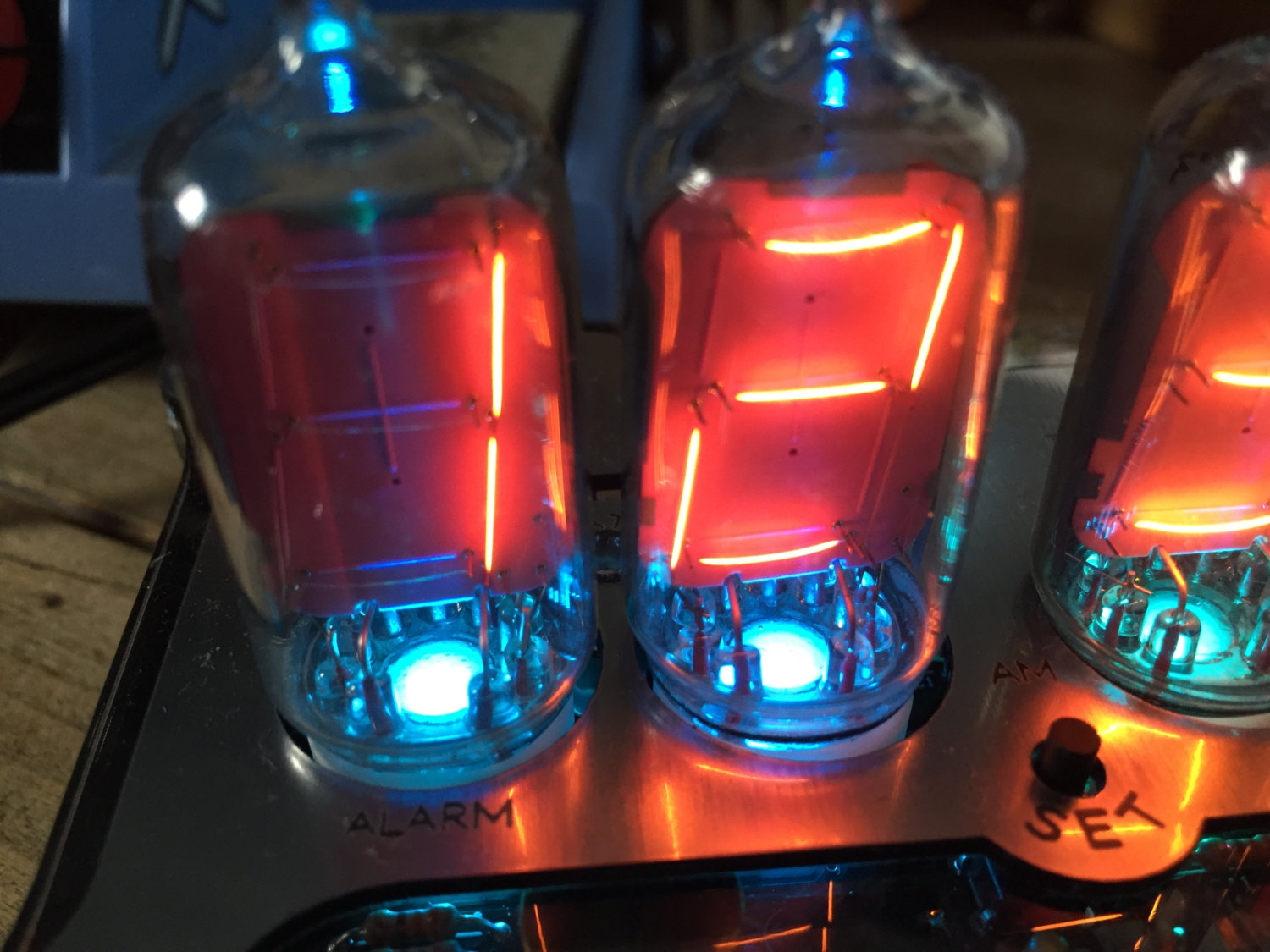
A vacuum fluorescent display (VFD) is a type of display device that was widely used in consumer-electronics equipment, particularly during the late 1980s. You might have seen them on devices such as video cassette recorders (VCRs), car radios, microwave ovens, and various other household appliances. These displays were popular because they offered bright and clear readouts, making it easy for users to see information like time, settings, and other pertinent data even from a distance or in low-light conditions. The VFD’s distinctive glowing numerals and symbols became a common sight in electronic devices of that era, contributing to the aesthetic and functional design of consumer electronics.
A VFD tube operates on the principle of cathodoluminescence, which is somewhat similar to the technology behind cathode ray tubes (CRTs) found in older television sets and computer monitors. However, VFDs function at much lower voltages compared to CRTs, making them safer and more energy-efficient for small-scale applications. Each tube within a VFD consists of an anode coated with phosphor material that emits light when bombarded by electrons. These electrons are emitted from a cathode filament, essentially a thin wire that releases electrons when heated. In addition to the anode and cathode, each tube in a VFD includes a mesh control grid, making it a triode vacuum tube. The control grid modulates the flow of electrons between the cathode and anode, effectively controlling the illumination of specific segments or pixels on the display. This triode configuration allows for precise control over which parts of the display are lit at any given time, enabling the VFD to show complex information.
One of the standout features of VFDs compared to other display technologies like liquid crystal displays (LCDs) is their ability to emit very bright light with high contrast ratios. Unlike LCDs, which rely on backlighting and can suffer from limited viewing angles and lower brightness, VFDs generate their own light through the phosphorescent process. This results in displays that are easily readable in a variety of lighting conditions, from bright daylight to dark environments. VFDs can support display elements of various colors, although the most common are green and blue-green hues. Standard illumination levels for VFDs are around 640 candela per square meter (cd/m²), but high-brightness versions can operate at levels up to 4,000 cd/m². Experimental units have achieved brightness as high as 35,000 cd/m², depending on the drive voltage and timing parameters used in their operation. The choice of phosphor material and the drive conditions directly impact not only the brightness and color of the display but also its overall lifespan. For instance, tubes using vivid red phosphors may have a shorter operational life, around 1,500 hours, due to the higher energy required to produce that color. In contrast, the more common green VFDs can last up to 30,000 hours, making them more durable for long-term use.
VFDs are highly versatile in terms of the types of information they can display. They can show seven-segment numerals, which are commonly used for displaying numbers in digital clocks and calculators. They can also feature multi-segment alphanumeric characters, allowing for the display of letters and more complex symbols. Additionally, VFDs can be constructed in a dot-matrix configuration, enabling them to render a wide range of alphanumeric characters and even simple graphics. In practice, there is little limitation to the shape or complexity of the images that a VFD can display; it largely depends on the design of the phosphor patterns on the anodes. This flexibility made VFDs suitable for a variety of applications, from simple numeric readouts to more sophisticated user interfaces in consumer electronics.
The history of VFDs dates back to the late 1950s and early 1960s. The first VFD was the single-indication DM160, developed by Philips in 1959. This device was a simple indicator tube that could display a single piece of information. The technology progressed rapidly, and by 1962, the first multi-segment VFD was introduced—a Japanese single-digit, seven-segment device that could display numerals zero through nine. This advancement opened the door for VFDs to be used in more complex applications, such as calculators, digital clocks, and other devices requiring numerical displays. Throughout the late 1960s and into the 1980s, VFD technology continued to evolve, becoming a staple in consumer electronics. By the late 1980s, hundreds of millions of units were being manufactured annually, underscoring the widespread adoption of VFDs in various industries.
Despite their many advantages, VFDs began to see a decline in popularity with the advent of newer display technologies like LCDs and light-emitting diodes (LEDs). These newer technologies offered benefits such as lower power consumption, thinner profiles, and the ability to display in full color, which were particularly advantageous for portable and battery-powered devices. However, VFDs still hold a niche appeal, especially in applications where brightness and viewing angles are critical. Some modern devices continue to use VFDs for their superior luminance and retro aesthetic, particularly in audio equipment and automotive dashboards.
In summary, vacuum fluorescent displays played a significant role in the development of electronic displays during the latter half of the 20th century. Operating on the principle of cathodoluminescence, they offered bright, high-contrast displays capable of showing a variety of information through numerals, alphanumeric characters, and even simple graphics. Their versatility and effectiveness made them a popular choice for consumer electronics, with a peak in production during the late 1980s. While newer technologies have supplanted VFDs in many applications, they remain a fascinating example of electronic display technology and continue to be appreciated for their unique qualities.




